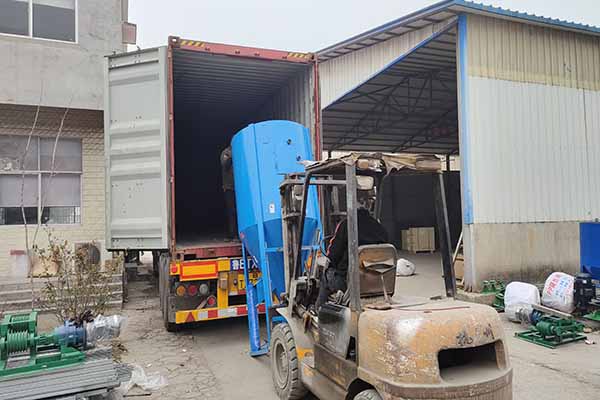How to Start a Profitable Chicken Farm
Time : 2025-06-30
Starting a profitable chicken farm is a rewarding venture that requires careful planning, knowledge, and a passion for the industry. Whether you’re looking to enter the poultry business for the first time or looking to expand your existing operation, this comprehensive guide will provide you with the essential steps to get started.
1. Market Research and Business Plan
Before diving into the chicken farming business, it’s crucial to conduct thorough market research and develop a solid business plan.
1.1 Market Research
– Identify Your Target Market: Determine whether you’ll be focusing on egg production, meat chickens, or both. Understand the demand in your local market and consider any competition.
– Analyze Costs and Pricing: Research the costs of feed, equipment, labor, and other expenses. Also, study the pricing strategies of local competitors.
– Regulatory Compliance: Understand the local and federal regulations regarding poultry farming, including biosecurity, environmental compliance, and food safety.
1.2 Business Plan
– Executive Summary: Provide an overview of your farm’s mission, vision, and goals.
– Company Description: Detail the legal structure of your farm, its history, and the services it will offer.
– Market Analysis: Include market research findings, target market, and competitive analysis.
– Organization and Management: Outline the organizational structure and key personnel.
– Service or Product Line: Describe the type of chickens you’ll raise and the products you’ll sell.
– Marketing and Sales Strategy: Explain how you’ll market your products and reach your target audience.
– Funding Request: If you’re seeking financing, detail how you plan to use the funds.
– Financial Projections: Include projected income, expenses, and cash flow.
2. Choosing the Right Location
The location of your chicken farm is critical for its success.
2.1 Proximity to Markets
– Choose a location that is close to your target market to reduce transportation costs and ensure fresh products reach customers quickly.
– Consider the availability of transportation options for delivering your products.
2.2 Environmental Factors
– Look for a site that is free from natural disasters like floods or earthquakes.
– Ensure the land has adequate water supply and proper drainage.
– Consider the impact of neighboring farms and potential odor issues.
2.3 Legal and Zoning Regulations
– Check local zoning laws to ensure that poultry farming is permitted in the area.
– Obtain necessary permits and comply with all regulations.
3. Selecting the Right Breed
Choosing the right breed of chickens is essential for profitability.
3.1 Egg Production
– Consider breeds known for high egg production, such as Leghorns, White Leghorns, and Hy-Line W36.
– Evaluate the egg size, color, and quality that will best meet market demands.
3.2 Meat Production
– For meat chickens, breeds like Cornish Cross, Ross, and Hubbard are popular for their fast growth and high yield.
– Consider the desired meat quality, including flavor and tenderness.
4. Farm Design and Equipment
The design of your farm and the equipment you choose will impact efficiency and productivity.
4.1 Brooder Houses
– Use high-quality brooder heaters to keep chicks warm during the first few weeks.
– Ensure proper ventilation to maintain a healthy environment.
4.2 Grow-out Houses
– Design houses with adequate space for the chickens to grow without overcrowding.
– Install proper lighting to mimic natural daylight cycles.
4.3 Feeding Systems
– Choose automated feeding systems to ensure chickens receive the right amount of feed.
– Consider using precision feeders that adjust to the birds’ needs as they grow.
4.4 Water Systems
– Provide fresh, clean water at all times using automatic watering systems.
– Regularly check and maintain water lines to prevent contamination.
4.5 Equipment Maintenance
– Regularly inspect and maintain all equipment to prevent breakdowns and ensure optimal performance.
5. Biosecurity and Health Management
Maintaining biosecurity and health management is crucial for the success of your chicken farm.
5.1 Biosecurity Measures
– Implement strict biosecurity protocols to prevent the introduction of diseases.
– Regularly clean and disinfect equipment and housing.
– Control access to the farm by limiting visitors and ensuring all personnel wear protective gear.
5.2 Health Management
– Regularly vaccinate chickens against common diseases.
– Monitor the flock for signs of illness and seek veterinary assistance promptly.
– Maintain a good nutrition plan to support the immune system.
6. Marketing and Sales
Effective marketing and sales strategies are key to maximizing profits.
6.1 Direct Sales
– Offer direct sales to local restaurants, retailers, and consumers.
– Organize farm tours to create a personal connection with customers.
6.2 Wholesale
– Explore opportunities to sell to wholesalers or distributors.
– Consider certifications like organic or free-range to command higher prices.
6.3 Online Marketing
– Utilize social media and online platforms to market your products.
– Develop a website to showcase your farm and products.
7. Financial Management
Sound financial management is essential for the long-term success of your chicken farm.
7.1 Budgeting
– Create a detailed budget that includes all expenses and revenue streams.
– Regularly review and adjust your budget as needed.
7.2 Financial Statements
– Keep accurate financial records and prepare regular financial statements.
– Use financial statements to make informed decisions and seek financing if necessary.
Conclusion
Starting a profitable chicken farm requires dedication, knowledge, and a strategic approach. By following these steps and continuously learning from the industry, you can build a successful poultry operation. Remember to stay adaptable and open to new ideas and technologies that can improve your farm’s efficiency and profitability.












